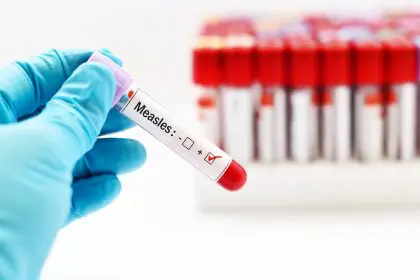In the ever-evolving landscape of health challenges, iron deficiency stands out as a stealthy yet pervasive threat, often going unnoticed until it causes significant harm. Recent findings highlight a concerning statistic, about 34% of women aged 18 to 50 in the United States suffer from this deficiency. This figure reveals more than just a common nutritional gap—it underscores a public health crisis silently impacting millions of women across the country.
The essential role of iron in the body
Iron fuels vital body functions. At its core, iron is indispensable for life. It plays a pivotal role in the formation of hemoglobin, the protein in red blood cells that transports oxygen throughout the body. Without sufficient iron, cells are starved of oxygen, leading to fatigue and decreased physical performance.
Beyond its role in oxygen delivery, iron supports muscle function through myoglobin, assists in energy production via metabolic processes, and bolsters the immune system. Despite its importance, iron deficiency remains alarmingly common—particularly among women—causing symptoms that can dramatically affect daily life and overall well-being.
Why women are more vulnerable
Biological factors increase the risk for women. Women of reproductive age are especially prone to iron deficiency due to unique physiological demands. Monthly menstrual cycles lead to routine blood loss, and those with heavier periods lose even more iron, making it difficult to maintain sufficient levels through diet alone.
Pregnancy adds another layer of complexity. During this time, iron needs increase substantially, as the body must provide for both the mother and the developing fetus. Even with an otherwise balanced diet, these heightened demands often leave many women chronically deficient, leading to long-term health challenges if not properly managed.
Recognizing the silent symptoms of iron deficiency
Subtle signs can mask serious health concerns. One of the biggest challenges with iron deficiency is how deceptively it presents itself. Many of its symptoms are easily dismissed or mistaken for everyday fatigue, stress, or the demands of a busy lifestyle.
Common symptoms include persistent tiredness, lightheadedness, and difficulty concentrating. Other signs may be more unusual, such as cravings for non-food substances like ice (a condition known as pica), chest discomfort, irregular heartbeats, or restless leg syndrome. Some individuals experience mood disturbances, unexplained hair loss, or pale skin—particularly visible in nail beds or the inside of the lower eyelid.
Because these symptoms can vary widely from person to person, many women live with iron deficiency without realizing it, potentially delaying diagnosis and treatment for months or even years.
How iron deficiency is diagnosed and treated
Accurate diagnosis begins with proper testing. Identifying iron deficiency typically involves blood tests that measure hemoglobin and ferritin levels. Ferritin reflects the body’s stored iron and serves as the most reliable early indicator of deficiency. For women, ferritin levels below 30 nanograms per milliliter (ng/mL) suggest iron depletion, though some experts argue that levels below 50 ng/mL may already signal impaired function.
Determining the cause of iron deficiency is equally critical. Factors can include inadequate dietary intake—particularly among those following plant-based diets—gastrointestinal conditions like Crohn’s disease or celiac disease, heavy menstrual bleeding, pregnancy, or medications that interfere with iron absorption.
Treatment plans depend on the severity of the deficiency. For mild cases, dietary changes can be sufficient. Including iron-rich foods such as red meat, poultry, seafood, lentils, spinach, and fortified grains can help restore levels. Pairing iron-rich foods with vitamin C sources—such as oranges, bell peppers, or strawberries—enhances absorption. On the other hand, substances like caffeine, dairy products, and certain whole grains can inhibit iron uptake if consumed simultaneously with iron-rich meals.
When dietary adjustments are not enough, iron supplements become necessary. These supplements come in various forms, including ferrous sulfate, ferrous gluconate, and ferrous bisglycinate. Each type has different absorption rates and side effects, with some being easier on the digestive system than others.
For those unable to tolerate oral supplements or who have severe deficiency, intravenous iron therapy offers a faster, more effective solution. This treatment bypasses the digestive system entirely and is often used for patients with significant malabsorption issues or chronic illnesses that deplete iron levels.
Ongoing monitoring and prevention strategies
Long-term management requires vigilance. Even after successfully restoring iron levels, many women remain at risk of recurrence, particularly if underlying causes—such as heavy menstrual bleeding—persist. Regular monitoring through blood tests every 3-6 months, eventually tapering to annual checks, can help detect any future drops in iron levels early.
Preventive strategies may include ongoing dietary adjustments, prophylactic supplementation during high-risk periods (such as pregnancy or intense physical training), and simple changes like using cast-iron cookware, which can naturally increase the iron content of meals.
The future of iron deficiency treatment and awareness
Emerging research offers new hope for better management. Scientists are continuing to explore innovative ways to treat and prevent iron deficiency more effectively. Areas of research include developing better-tolerated supplements, understanding genetic influences on iron absorption, and investigating links between iron deficiency and other health conditions, such as thyroid dysfunction or heart failure.
Public health campaigns are also beginning to shine a light on this often-overlooked issue, raising awareness about symptoms and encouraging more widespread screening. Early intervention can significantly improve quality of life, enhance cognitive function, and prevent long-term health complications.
As understanding of iron deficiency grows, one thing becomes clear: this silent health issue can have far-reaching effects, but with the right knowledge and proactive strategies, it is both preventable and treatable. For millions of women across the United States, addressing iron deficiency could be the key to unlocking better health, increased energy, and improved overall well-being.















